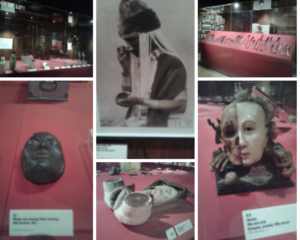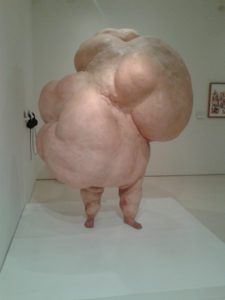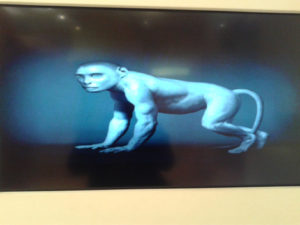I decided to go to a few Museums to kill some time in London before having to be somewhere so I popped into the Wellcome Trust Collection Museum and I was in awe of what I found. But why?

The images above were all taken from the permanent exhibition: Medicine Man. It celebrates the human body and our need and interest to understand it by exhibiting an extraordinary array of objects collected by Henry Wellcome; the founder of the museum. Frankenstein (and an idea for a new play) comes to mind. The careful gathering and delicate processing of these objects draws out stories of the people using and owning them leading us to our imagination of violence and the cultural fascination with death and detection. The museums richness of artwork, photography, instruments and archival material offers both unsettling and intimate responses to possible trauma. Its a complex entwining of science and storytelling that calls upon all of us to create and use the scariest thing in the world – our imagination.
The mummified male body, in the foetal position, fascinated me. Mainly because it was once a living person but because it was preserved back in 1200, we are able to see the remains. How mad is that? The body was apparently seated in the upright position before mummification and was also buried with personal possessions, ritual objects and even food offerings for the afterlife world.
Regardless, our fascination with the human body and history won’t ever end and has the potential to act as a stimulus for creating art.

The above is an art installation piece by British artist John Isaacs and is called ‘I can’t help the way I feel’. Found in the Medicine Now permanent exhibition I was in disgust and awe at the same time. As you enter you cannot ignore the 6 foot something malignant sculpture and the emotions it triggers, (que irony because of the title, but I suppose all art evokes emotion.) The work can be seen as a metaphor for the way in which we become crippled by the possibility of an emotional landscape. In other words, feeling all sorts of things at once, which the piece achieved to do, but in quite an intrusive provocative way. It is clearly a diseased body but it’s shape and the fact that it had no other human features other than the legs and feet suggested that the disease is all we can see in each other – even the shape of the disease. Either way it led me to contemplate the unfortunate circumstances of the individual.

The hybrid is fascinating especially when it comes to animals, so this piece by Daniel Lee (an American artist) also caught my eye. Also found in the Medicine Now exhibition This is of course a response to the human evolution process as this species shares traits with the human. Lee’s work can be interpreted to tell us about the connection to other animals and our relations to them in order to understand more about ourselves.
My quick visit to the museum ended at the Institute of Sexology Exhibition. As somewhat of a prude on the topic my mind was opened to the taboo subject because of the curators’ attempt to eradicate any titilation, by looking at it from a purely research perspective. And it worked. I wasn’t allowed to take any photos but the exhibition archived material on psychologists’ notes (from Freud), historical books and letters, erotica, film and photography. What made it even more interesting is the fact participants had the option of filling out an anonymous questionnaire about their current sex lives and the results of the data collected so far, including statistics, were projected onto a board at the end of the exhibition. The number which stood out to me was (over) 3000 people ‘are currently unhappy with their sex lives!’ Interesting.
And if you’re looking for somewhere to rest the you can take a comfy seat on the bean bags with one or the books or…even a nap!

I could’ve spent all day in that museum and started to resent the fact that I had to be somewhere else.
Who said museums were boring!
The Wellcome Collection is right next to Euston Station and is open Monday – Saturday from 10am.

